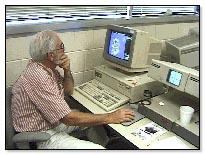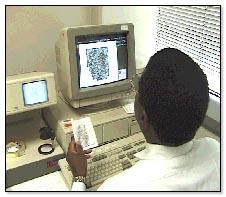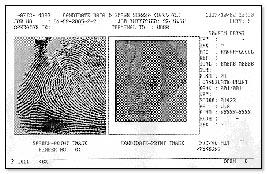84267051latent14.jpg

An official website of the State of Georgia.
The .gov means it’s official.
Local, state, and federal government websites often end in .gov. State of Georgia government websites and email systems use “georgia.gov” or “ga.gov” at the end of the address. Before sharing sensitive or personal information, make sure you’re on an official state website.
Still not sure?
Call 1-800-GEORGIA to verify that a website is an official website of the State of Georgia.
|
Another service offered by the Latent Print section is access to the Automated Fingerprint Identification System (AFIS). In January 1988, the GBI installed this multi-million dollar computerized system, capable of reading, matching and storing fingerprints for every criminal justice agency in the state of Georgia.
Identifiable latent prints are processed through AFIS to search for possible matches against the database of post-arrest fingerprint records maintained by GCIC. Latent print examiners can search latent prints against a known criminal file and an unsolved latent file, as well as search questioned inked prints against the same files. |
84267051latent14.jpg

|
|
When a print, complete, small or partial, is developed by the lab or is brought in by a local law enforcement agency, it is first examined by an expert to determine its value and then it is scanned into the system. The system then conducts its own mathematical analysis. Using special color graphic terminals, the forensic examiner can clarify the image of the fingerprint, enlarge it, and tell the computer to make certain assumptions about the print.
These experts, looking at the system's image of a partial fingerprint, can tell the computer that it appears to be a thumbprint, a certain finger, or a left or right hand fingerprint. This information helps the system when it begins to search its memory for prints that have similar mathematical characteristics. |
|
|
84267884latent15.jpg

|
Once the trained expert finishes looking at the print through a computer graphics terminal and giving the computer any specific search instructions, the new print is compared first against the unidentified latent print database then against the main database. A single high speed AFIS processor does this checking at a rate in excess of 750 inked fingerprints per second, and 1,000 latent fingerprints per second. AFIS then provides the fingerprint examiners with a series of possible matches, rating them from the most likely to the least likely match. |
| By way of a computer split-screen, the scientist is then able to perform a side-by-side comparison of similarities of the known inked fingerprint verses the candidate or unknown latent fingerprint. |
84267947latent16.jpg

|
|
Unidentified latent fingerprints of good quality are entered into the unidentified latent fingerprint database and are compared daily to new fingerprint records being added to the main fingerprint database from arrest fingerprint cards submitted by local agencies to GCIC.
Crimes have been solved through the comparison of a latent print file with a ten-print application card. For example, a 1988 murder in Griffin, Georgia was solved when the offender applied for a job requiring a background check. When his ten-print application card was entered into the system for a background check, a print from the card matched a latent print that had been on file in the unidentified latent fingerprint database for eight years. He was convicted of the murder in April of 1997. |
|